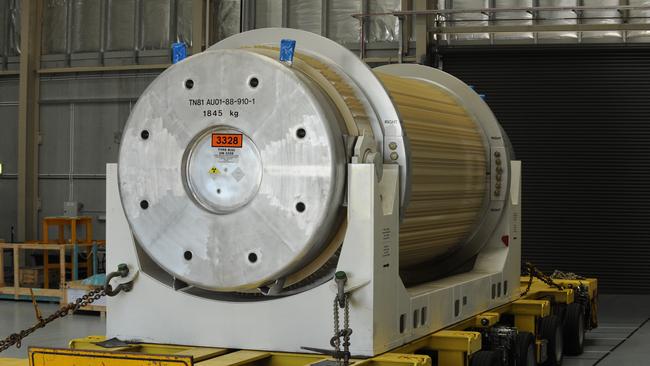Australia will get a new nuclear medicines facility to overhaul ageing plant
Australia will create a new nuclear medicine facility as part of a significant expansion of sovereign medicines manufacturing.

Australia will create a new nuclear medicine centre as part of a significant expansion of sovereign medicines manufacturing.
The building at ANSTO’s Lucas Heights centre in Sydney’s south means Australia will be able to manufacture nuclear medicine to help treat thousands of patients for diseases including cancer and deliver essential diagnoses. The nuclear medicines will be supplied to hospitals and medical clinics around Australia.
The centre, which will be announced by federal Minister for Industry and Science Ed Husic on Tuesday, will replace the ageing Nuclear Medicine Processing and Distribution Facility created in 1959 as a research laboratory.
ANSTO manufactures more than 75 per cent of nuclear medicine isotopes used in Australia, but the current facility is reaching the end of its life. ANSTO produces about 12,000 patient doses of nuclear medicine that are sent to 250 hospitals and medical centres in Australia and the region, and that manufacturing capacity is expected to ramp up significantly with the creation of the new centre.
Lucas Heights is also critical to the production of nuclear medicine materials used in diagnostic imaging for conditions including heart disease and cancer, and in addition the facility runs nuclear medicine clinical trials.
“Nuclear medicines are essential to ensure the health of Australians,” Mr Husic said. “On average, every Australian will need at least two nuclear medicine procedures during their lifetime.
“The new state-of-the-art nuclear medicine manufacturing facility will ensure ANSTO can increase manufacturing and introduce cutting-edge new medicines for decades to come.
“ANSTO’s nuclear medicine precinct in Sydney will revolutionise the domestic production of nuclear medicines and improve the lives of thousands of Australians.”
The predominant nuclear medicine manufactured at ANSTO is Molybdenum-99, a radioisotope used by hospitals and medical centres that is the most widely used nuclear medicine in the world.
ANSTO’s general manager of nuclear medicine, Ian Martin, said the investment would shore up Australia’s sovereign capability in nuclear medicine manufacturing and guard against supply-chain disruptions. The production of nuclear isotopes from the centre would be particularly critical as demand for the medicines grow, especially given advances in cancer treatments.
“Ultimately the new facility is really designed to give safe, secure, sovereign supply for Australia of nuclear medicines for the next 40 years,” he said.
“It will continue to produce the core nuclear medicines that we produce today as well as having capacity to ramp up production into the future.”
Mr Husic will commission an independent review to confirm the design and implementation of the centre, which will then be subject to a tender process. It’s expected to be completed by the mid-2030s.




To join the conversation, please log in. Don't have an account? Register
Join the conversation, you are commenting as Logout